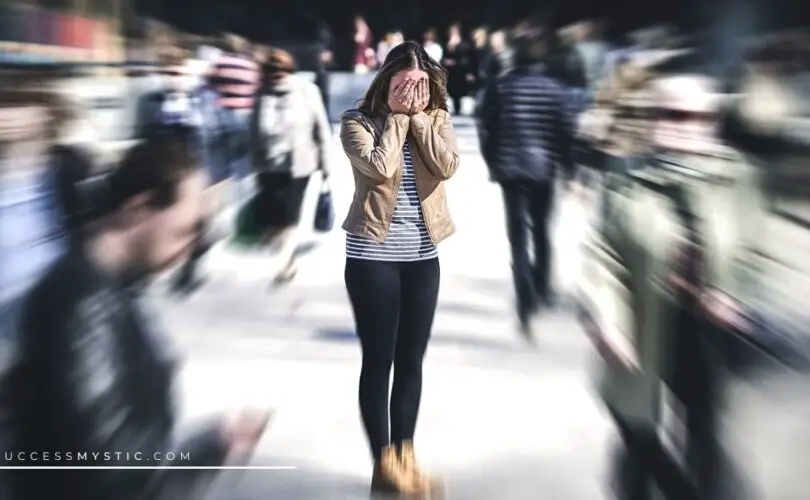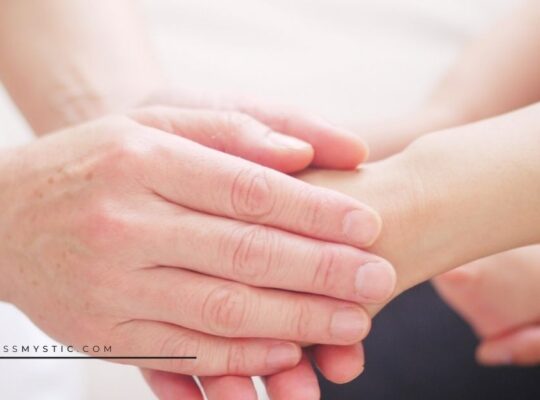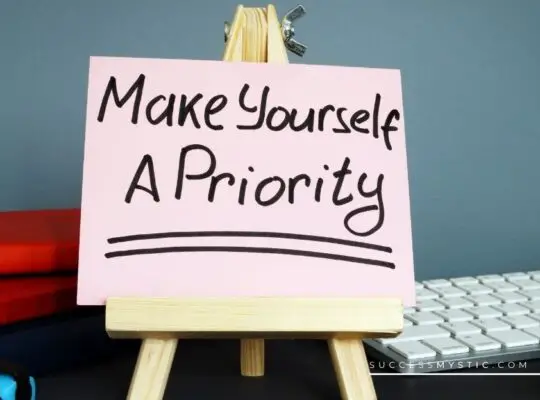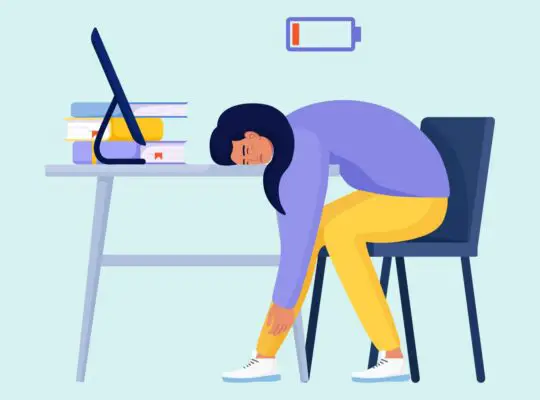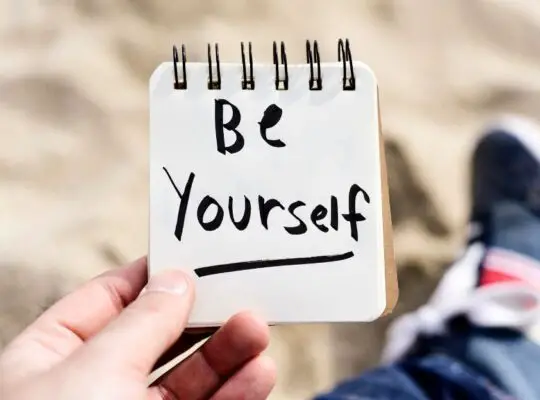The world today is unlike anything many of us could have ever imagined it would be. The chaos of COVID-19 and the corresponding circumstances have made living during this time stressful and hard to navigate for many people.
In order to understand how to manage anxiety during these times, we must first fully understand what anxiety is, how it has the potential to impact us, and signs of its presence in our lives. Armed with this information, we can then learn ways to manage anxiety and anxious thoughts when it is present, as well as prevent anxiety when possible.
What is Anxiety
Anxiety is the response of the mind and body to stressful, unfamiliar, or dangerous situations. Anxiety is marked by a sense of distress, uneasiness, apprehension, dread, and fear felt as related to a specific event or circumstance (Jovanovic, 2019). Evidence suggests that anxiety can be caused by a combination of factors, to include genetics, brain chemistry, and environmental factors (Holland, 2020).
While all people experience anxiety in some form from time to time, the difference between what is considered to be typical anxiety and that which is considered to be clinically relevant anxiety relates to the impact the anxiety has on the individual experiencing it.
- The anxiety must be causing the person to feel distressed to the point they feel they are suffering and deeply unhappy.
- Additionally, the anxiety must also significantly impact their ability to function normally in daily life (i.e. family life, work, school, recreation, etc.).
- When anxiety is severe enough to reach these levels and has these impacts, it is significant enough to warrant intervention (Nydegger, 2019).
Anxiety left unaddressed, can manifest into three primary anxiety-related disorder categories (Jovanovic, 2019):
- Anxiety disorders: Anxiety disorders are generally characterized by excessive fear and result in negative behavioral and emotional consequences.
- Obsessive-compulsive disorders: Obsessive-compulsive disorders tend to be characterized by obsessive, intrusive thoughts that trigger related compulsive behaviors that are performed in order to relieve the anxiety associated with obsessive thoughts.
- Trauma and stressor related disorders: Trauma and stressor related anxiety disorders are linked to the experience of a specific trauma (i.e. abuse, an accident, or an unexpected death) or stressor (i.e. divorce, moving, or starting college).
Anxiety In a COVID World
Covid-19 is a global pandemic that seemingly came out of nowhere and has had massive impacts on the world. From the loss of lives on a large scale, to massive economic loss, to our lives being completely altered in ways we could have never imagined- it’s only natural that many people are experiencing high levels of anxiety during this time.
A national survey conducted by the American Psychiatric Association found that half of US adults who completed the survey reported high levels of anxiety. The survey was derived from a sample of 1004 adults between 18-91 years old.
Nearly half (48%) of the survey participants reported anxiety about the chance of getting Covid-19, while 40% noted anxiety about becoming seriously ill or dying as a result. Meanwhile, more than half of the respondents (62%) reported anxiety about the possibility of family and loved ones getting ill.
Participants also noted anxiety related to the impact the pandemic will have on personal finances and the long-lasting impact it will have on the economy (WebMD, 2020).
This research also demonstrated the impact the increased anxiety was having on respondents in their daily lives.
Roughly 19% reported difficulties sleeping, 12% reported increased incidences of discord with a spouse or loved ones as a result of more time spent at home together, and 8% reported higher consumption of alcohol or other substances. Additionally, nearly 24% or participants noted they struggled to focus on topics other than the pandemic (WebMD, 2020).
Increased instances of anxiety and mental illness among individuals living through a pandemic is a normal outcome. Prior research conducted during the Ebola virus outbreak in Sierra Leone showed increased numbers of reported mental health and psychosocial problems.
When a study from the H1N1 influenza outbreak in 2009 revealed an increase in emotional symptoms including anxiety and depression among others (Morin, 2020).
Some research also shows that a pandemic such as Covid-19 can exacerbate some mental health conditions, including anxiety. It’s believed that those who are especially vulnerable to stress and anxiety are at the highest risk.
Evidence suggests that the less comfortable a person is with not knowing what to expect in a particular situation, the higher the likelihood of anxiety. As a result of the increased anxiety, there is then increased worry and ultimately increased stress (Peterson, 2017).
When studying the H1N1 pandemic, it was found that those individuals who were least able to tolerate uncertainty experienced the highest levels of anxiety during the pandemic (Morin, 2020).
The inability to tolerate uncertainty also impacts our thoughts and behaviors. As we feel feelings of anxiety, worry, and stress, our thoughts become consumed with worst-case scenarios and potential negative outcomes. Since negativity feeds on itself, as we dwell on the negative, we think more about the negative until it seems to take over our thoughts completely. As our thoughts become consumed by negativity our emotions are unavoidably impacted also.
We can experience anhedonia, a component of depression where there is a reduction in pleasure and positivity. We actually become less capable of experiencing positive emotions and pleasurable experiences as a result of the effect our negative feelings have on our thoughts.
This can cause us to make negative behavior choices such as disengaging from relationships, refraining from eating, partaking in substance abuse, or lashing out at others (among other things).
We can even become paralyzed by anxiety, worry, and stress and become dormant or “stuck,” effectively not moving forward in our lives because we don’t know what might happen (Peterson, 2017).
A cross-sectional multistage study published in March 2020 looked at 11, 954 students recruited from 50 Chinese universities amongst various cities, provinces, regions, and municipalities in China.
The study aimed to look at the relationships between the types of stress students’ experienced and students’ mental health, to distinguish the effects of stressors on mental health problems, and to explore the important role of uncertainty stress on the development of mental disorders.
The Student Daily Stress Questionnaire (SDSQ) was applied to measure the different types of stress, and mental health status was measured using the 12-item Chinese Health Questionnaire (CHQ). Both unadjusted and adjusted logistic regression models were utilized in the statistical analyses. Multilevel analyses were performed to examine the variation of mental disorder at both the individual and university levels (Wu et. al., 2020).
The results of the study revealed that the prevalence of mental disorders was 22.8%. The unadjusted models showed that age, gender, grade, major, and university location and type were the correlates of mental disorders among students.
Researchers were able to conclude that study stress, life stress, and uncertainty stress were positively associated with mental disorders. The multilevel logistic regression models showed that uncertainty stress was far more likely to result in students’ mental disorders than study or life stress after controlling for the university level. It was noted that the greater the perceived uncertainty stress, the higher the prevalence of mental disorders (Wu et. al., 2020).
Thus, demonstrating how times of fear, uncertainty, and chaos such as a pandemic like COVID-19, can in fact lead to negative mental health impacts.
The Effects Of Anxiety On Mental Health And Wellness
When we experience anxiety, it can have short-term and long-term implications for our mental health and overall wellness. For those who experience mild anxiety, impacts may be short lived (i.e. lasting minutes or hours, or only experienced a few times) and relatively minor, ranging from side effects such as increased stress levels, greater feelings of sadness, increased heart rate, upset stomach, increased blood pressure, dizziness, and shaking (Alyssa, 2019).
When anxiety is more chronic, it can lead to more serious mental health issues and more serious physical wellness issues. According to the National Institute of Mental Health, a host of anxiety disorders are attributed to prolonged and severe battles with anxiety (Cherney, 2020).
Such disorders include the following:
Social Anxiety Disorder
Social anxiety disorder is marked by a paralyzing fear of social situation and the belief that one is being judged or will be embarrassed by others. This leads to intense feelings of shame and isolating behaviors (Cherney, 2020).
Generalized Anxiety Disorder
Generalized anxiety disorder is characterized by intense anxiety linked to no specific factor or event. Anxiety is typically diagnosed as GAD when it persists for longer than six months and interferes profoundly in the ability to live one’s life (Cherney, 2020).
Obsessive Compulsive Disorder
Obsessive compulsive disorder is a condition marked by an overwhelming desire to perform certain rituals (compulsions) repeatedly, as well as the experience of unwanted and distressing thoughts (obsessions) (Cherney, 2020).
Post-Traumatic Stress Disorder
PTSD manifests after bearing witness to or experiencing something traumatic. Such events can include an unexpected death, abuse, or going to war. The end result is traumatic episodes that can be sporadically triggered bringing on negative thoughts, emotions, and behaviors when the trauma is brought back to the conscious mind (Cherney, 2020).
Panic Disorders
Panic disorder involves spontaneous feelings of panic, impending doom, or terror that can trigger panic attacks. Signs of these attacks can include increased heart rate, inability to breathe, and chest pain, among others. These panic attacks can be randomly triggered and come on with or without warning (Cherney, 2020).
Phobias
Phobias extend beyond the level of fear and can be defined as a fear that is unreasonable in its degree or nature. Phobias cause people to change their lifestyle as a means of managing it. Phobias cause those who suffer from them to have increased stress levels, heightened anxiety, and increased risk of depression (Cherney, 2020).
Research on anxiety also outlines long-term impacts of anxiety on the body. The cardiovascular system, excretory system, digestive system, immune system, and respiratory system are among those that can be significantly impacted.
Issues can include increased risk of heart disease, decreased immune system, gastrointestinal disorders, memory problems, worsened asthma symptoms, muscle tension, insomnia, frequent migraines, and chronic pain conditions, among various others (Cherney, 2020).
Signs Of Anxiety
The way a person experiences anxiety can be unique to them, meaning the signs of anxiety can be very personalized.
- Feelings can range from butterflies in the stomach to a racing heart rate.
- Others might note more intense levels of anxiety that include panic attacks, nightmares, and uncontrollable negative thoughts and memories.
However, there are some generalized signs and symptoms that can alert you to the fact that you may be experiencing anxiety or anxious thoughts. The more aware one is of the various ways anxiety can present itself, the more easily one can catch anxiety in its early stages and take active measures to prevent or control it.
Some signs of general anxiety can include:
- Increased heart rate
- Rapid breathing
- Restlessness
- Trouble concentrating
- Difficulty falling asleep
Source: Holland, 2020
Other symptoms of anxiety include:
- Irritability
- Intense fear
- Worry
- A general “keyed-up” feeling
- Physical symptoms of anxiety often include
- Sweating
- Dry mouth
- Hot flashes or chills
- Dizziness
- Heart palpitations
- muscle tension
- Trembling
- Nausea
- Restlessness
Source: Nydegger, 2019
What You Can Do: 20 Ways To Manage Anxiety and Anxious Thoughts
Though anxiety can seem overwhelming and unbearable, there are things you can do to help you get a handle on the anxiety and anxious thoughts that are currently present in your life.
The following list outlines 20 specific ways one can manage their anxiety and anxious thoughts throughout their day to day lives.
1| Deep Breathing
The practice of deep breathing can assist in managing anxiety by helping individuals cope with the negative emotions that often correspond with anxiety. Engaging in deep breathing brings the body back to a state of calm and focus, away from the stressor or trigger, and back to a neutral state where the situation or circumstance can be more reasonably processed.
Diaphragmatic breathing specifically can be especially beneficial for bringing about a calming response, as it involves breathing where the belly expands in and out versus the chest rising up and down. This slows the heart rate and again brings the body to a place of calm where one is able to better ration and reason (Cohen, 2017).
2| Exercise
Evidence suggests that only 20 minutes of exercise can aid in the reduction of symptoms of anxiety. This works because when you exercise the body is filled with endorphins which enhance mood, increase relaxation, and decrease anxiety.
There is also research to suggest that as the temperature of the body increases with exercise, the neural circuits responsible for controlling cognitive function and mood are altered, including those that impact the neurotransmitter serotonin (Cohen, 2017). Similarly, this response is believed to be linked to stress reduction, mood boosting, and enhanced relaxation.
3| Meditation
Meditation is the practice of continuous deep focus on an object for a prolonged period of time. Meditation can help in the management of anxiety by shifting focus off the stressor and/or trigger and towards a more positive target.
For instance, one can learn during meditation to focus on their breathing or a positive phrase or word. This helps the mind pivot from the anxiety inducing situation or circumstance and towards something that will aid the mind and emotions in returning to a state of calm (Esposito, 2014).
4| Adequate Rest
Sleep deprivation plays a large role in our susceptibility to anxiety. Failure to get adequate amounts of sleep on a regular basis amplifies the brain’s anticipatory reactions which in turn increases overall anxiety levels.
Essentially, we are more prone to react to situations with anxious responses when we are lacking sleep so ensuring we get rest regularly is essential to keeping anxiety levels low and stress well managed (Esposito, 2014).
5| Minimize Caffeine Intake
Too much intake of caffeine can result in a more anxious state of being. Since caffeine is a nervous system stimulant, consuming too much of it can exacerbate anxiety because it stimulates the body’s flight-or-fight response. Studies have shown that excessive caffeine intake can make anxiety one already has worsen, and even trigger anxiety attacks. Thus, limiting daily caffeine intake is an easy way to keep anxiety under control (Cohen, 2017).
6| Journal
Journaling is a technique whereby you write down your anxious thoughts and feelings as they arise. This can help with the management of anxiety by giving you an avenue to release those feelings and thoughts so you can move forward.
Additionally, writing them down on paper allows you to visibly see and analyze those anxious thoughts to assess their validity. Thus, you’re better able to apply reason and logic to the situation or circumstance once it’s out of your head and onto paper (Esposito, 2014).
7| Gratitude
Gratitude is the practice finding those things in your life that you are thankful for. Whether big or small, the goal is to refocus attention away from the anxious trigger and towards something more positive. This gives the mind a chance to calm down and decrease negative thoughts and emotions (Esposito, 2014).
8| Practice Self-Care
Self-care is the practice of taking actions to preserve or improve one’s health. Self-care can include activities such as going for a walk, getting a massage, talking to a friend, or anything that you deem as beneficial for improving your health, which includes mental health.
Self-care can be beneficial when it comes to anxiety because the act of caring for yourself can relieve stress and tension, effectively decreasing anxiety levels as well. When you engage in a practice that invests in your well-being whether physical or mental, you improve your well-being and sense of peace and satisfaction (Esposito, 2014).
9| Implement Lavender
Lavender is an essential oil that can be applied topically or inhaled via the use of a diffuser in order to produce calming effects within the body. Lavender is known to be a natural remedy to reduce anxiety and other nervous conditions (Esposito, 2014).
10| Healthy Diet
Research suggests that there are certain nutrients present within certain foods that can work to alleviate anxiety. Omega-3 fatty acids, green tea, and dark chocolate (in moderation) all possess nutrients that deal with the neurotransmitters in the brain and help to ease anxiety by releasing stress-relieving signals (Hirschlag, n.d.).
11| Drink Chamomile Tea
Research has shown that chamomile is both relaxing and can significantly decrease anxiety as well as aid in the fight against depression. Research has shown that chamomile tea can function like a benzodiazepine which is a prescription drug that can reduce anxiety and induce sleep by binding to benzodiazepine receptors (Cohen, 2017).
12| Stay Social
Socialization is a strong tool for helping to combat anxiety. In isolation, anxiety has room to flourish and continue to manifest unchecked. However, when we remain in community with family and friends, we have people in our lives who can help us stay grounded, refocus on more positive objects, and be present to support us when we find ourselves dealing with anxiety.
The presence of others can help us to feel the support we need to face our anxiety and take steps to conquer it (Esposito, 2014).
13| Relaxation Techniques
Practicing relaxation techniques can help us to refocus our energy and attention to more positive things, while simultaneously decreasing our stress and anxiety levels. When we engage in practices like breathing, yoga, or aromatherapy we can get a hold of anxious thoughts and bring ourselves back to a place of calm (Nydegger, 2019).
14| Identify Triggers
Identifying those things that trigger anxiety and anxious thoughts is key to managing anxiety. When you understand those circumstances and situations that lead to anxiety or anxious thoughts you can take steps to limit exposure to those triggers when possible.
If avoiding triggers is not possible, then steps can be taken to help you cope with that anxiety when placed in those specific situations (Hirschlag, n.d.).
15| Establish A Routine
Routines can help subside a lot of the anxiety we face on a daily basis by helping eliminate the element of surprise and establish predictability in our routines. When we know what will come next the fear of the unknown is eradicated, which works to ease our anxiety (Hirschlag, n.d.).
16| Limit Media Consumption
Though much of the media these days is rooted in trying to disseminate information, too much information which tends to be negative these days as related to COVID-19 can be a huge trigger for anxiety.
Limiting the amount of media, we take in on a daily basis is a great way to keep ourselves sane and healthy mentally. Whether it’s setting daily limits or choosing days where there is a complete absence of media consumption, setting those boundaries can go a long way for preserving peace during these times (The Optimist Daily, 2020).
17| Seek Out Meaningful Information
A strong complement to limiting media consumption is to ensure that the information being consumed is accurate and beneficial. Taking the time to get information that is high-quality and valid will help you make sound decisions and make judgments based on facts instead of fear or other media tactics (Parker, 2020). This will help ease fear and anxiety and keep uncertainty at bay.
18| Set Boundaries
Boundaries are a crucial part of preserving peace and combatting anxiety. Setting boundaries means setting firm limits on what you can/will do or allow and what you can’t/won’t do or allow as a means of protecting your peace and overall wellness.
Setting boundaries can look like telling people “no” when asked to do things, turning down social invitations, staying off social media platforms, or implementing whatever other limits necessary to help keep you from getting stressed, anxious, and depressed (Power of Positivity, 2020).
19| Stay Present
Staying in the present can sometimes be a great way to fight anxiety which often feeds off of trying to get us to focus on the many unknowns of the future, particularly in times of chaos and trauma such as a pandemic.
Staying in the present acts as a grounding force, keeping us focused on the now versus the uncertainties of the future. It also decreases overthinking and reduces stress (Edberg, 2020).
20| Stay Hopeful
It can be so tempting to lose the faith amidst all of this chaos of COVID-19, but it is so important to remain hopeful if we want to maintain our wellness. Hope gives us something to look forward to and something to hold onto in the midst of the negativity we face right now.
When we think about the future of things getting better, we are able to find a silver lining that grounds us and helps us to stay positive.
9 Tips For Preventing Anxiety
There are also measures that can be taken in order to prevent anxiety from creeping in and wreaking havoc in your life, especially to prevent COVID-19 from taking such a harsh mental and emotional toll.
1| Awareness
Developing awareness about the nature of your anxiety is essential for being able to prevent it. When you take the time to pause during moments of anxiety it gives you the opportunity to gain clarity regarding what the anxiety or anxious thoughts might be and it offers the foundation for discovering what is the cause of the anxiety and anxious thinking (Healthwise Staff, 2019).
2| Question
Once you know what your anxieties or anxious thoughts are, the next step is to question them as a means of getting to the root of the anxiousness. What you may think is causing the anxiety on the surface, after questioning might not prove to be the true root of the issue. Understanding the real root is necessary in order to properly address the proper source and anxiety and anxious thoughts (Healthwise Staff, 2019).
3| Avoid
Staying away from those triggers and sources of anxiety and anxious thoughts is key to keeping anxiety at bay. Once you know what leads you to a place of anxiousness, you can take the necessary steps to stay away from those situations, people, or prevent the circumstances that will lead to anxious thinking and anxiety (Healthwise Staff, 2019).
4| Replace
When you have an anxious thought, you can actively catch and replace those thoughts with positive ones. This stops anxiety before it has the opportunity to take root in your mind and shifts your line of thinking towards one that is more healthy (Healthwise Staff, 2019).
5| Support and Help
When it comes to anxiety, you don’t have to suffer alone. There is support and resources available to offer you help when you need it. The key is understanding the type of resources that are available, when they are most appropriate to be consulted, and how to access them so that they can be appropriately utilized.
6| Doctors
Doctors are medical professionals who are trained to medically diagnose generalized anxiety and related disorders and can refer you to professionals or link you resources that can prove to be beneficial in the fight against anxiety.
Talking to your healthcare professional honestly and openly about the scope of your anxiety can help them reach a diagnosis and develop a care plan for you that may include other professionals and tools to help in the management and treatment of your anxiety (Morin, 2020).
7| Medication
In some instances, medication can be a great support for individuals who find that their anxiety is debilitating and that it interferes in their ability to live a normal life. Traditional anti-anxiety medications include benzodiazepines which are typically described for short term use.
There are also newer options such as SSRI antidepressants which are generally prescribed for more of a long-term solution when treating anxiety (Smith, 2020).
8| Counseling
Getting the help of a licensed therapist or counselor can be another good way to work through anxiety that proves to be beyond the scope of conquering on your own. Therapists and counselors have been trained to help you develop and implement techniques, as well as offer you the tools that will help you begin to manage anxiety.
There are various types of therapy treatment that can aid in the treatment of anxiety. Such therapy can include Cognitive Behavioral Therapy, Exposure Therapy, Dialectical Behavioral Therapy, Psychoanalytic Therapy, and Interpersonal Therapy among others (Cuncic, 2020).
9| Support Groups
Support groups can be another method of finding the means to overcome anxiety. Support groups are communities of people who struggle with similar anxieties, thoughts, and conditions. These communities can provide safe, non-judgmental spaces for you to share your thoughts and feelings and share resources, tools, and strategies for coping among an understanding group of peers. This support can be just what you need to get the upper hand over your anxiety (Cuncic, 2020).
Final Thoughts
Covid-19 has created a situation nationally and globally that is tense and has left us a lot of unknowns. With so much out of our control, it can be easy to allow our fear and anxiety to get the best of us.
Thankfully, there are ways that we can get the upper hand and take control of our anxiety so that we can either manage it or prevent it altogether. By taking measures to become more aware of our triggers and get ourselves back to a place of calm when we feel anxiety on the rise we can be more in control of our lives.
References:
Alyssa. (2019, November 25). The Short and Long-Term Effects of Anxiety on The Body.
Cherney, K. (2020, August). 12 effects of anxiety on the body. Healthline.
Cohen, I. (2017, 5). 10 simple tactics to manage anxiety and panic attacks. Psychology Today.
Cuncic, A. (2020, May 30). The best types of therapy to treat anxiety. Verywell Mind.
Edberg. (2020, May 19). 7 awesome reasons to be present, and how to do it. The Positivity Blog.
Esposito, L. (2014, May 14). 21 quick tips to change your anxiety forever. Psychology Today.
Hirschlag, A. (n.d.). How to cope with anxiety: 11 simple ways and when to see a doctor. Healthline.
Holland, K. (2020, September). Anxiety: Causes, symptoms, treatment, and more. Healthline.
Jovanovic, T. (2019, November 12). Anxiety » what is anxiety? Signs, causes, symptoms. Anxiety.org.
Morin, A. (2020). How to cope with anxiety about coronavirus (COVID-19). Verywell Mind.
Nydegger, R. (2019, September 12). Anxiety: One of the miseries of existence. Find a Psychologist.
Smith, M. (2020, September). Anxiety medication. HelpGuide.org.
WebMD. (2020, March 20). High anxiety in America over COVID-19.
Disclaimer: This publication is for informational purposes only and is not intended as medical advice. Medical advice should always be obtained from a qualified medical professional for any health conditions or symptoms associated with them. Every possible effort has been made in preparing and researching this material. We make no warranties with respect to the accuracy, applicability of its contents or any omissions.

